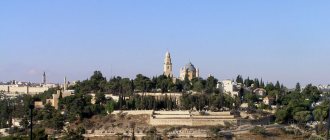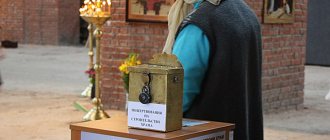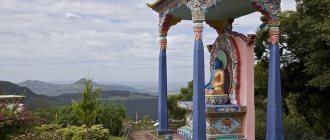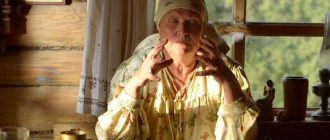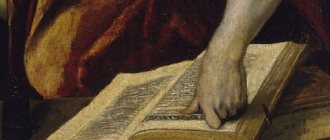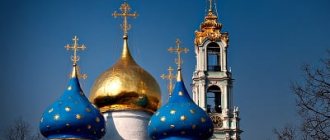In Russia there are special places where a person is transformed, cleansed of vanity, resentment, and anxiety. What contributes most to this: faith, the mood for a miracle, the beauty of the place, the special atmosphere? Or maybe all this together is grace, for which people come thousands of kilometers, visiting monasteries and churches, reading prayers at prayed icons. We’ll talk about what significant and revered holy places there are in Russia below.
Icon of the Vladimir Mother of God
According to church tradition, the icon was painted by Evangelist Luke. From Jerusalem it came to Constantinople, and then, at the beginning of the 12th century, it was presented to Prince Mstislav. Several miracles are attributed to the icon, including deliverance from Tamerlane in 1395.
After the revolution, the icon was removed from the Assumption Cathedral of the Moscow Kremlin for restoration, and in 1926 it was transferred to the Historical Museum. There, the icon of the Vladimir Mother of God spent only 4 years, after which it was donated to the Tretyakov Gallery. Since 1999, the icon has been kept in the Church-Museum of St. Nicholas in Tolmachi.
Valaam Monastery
The Karelian pearl is located on the northern island of Valaam in Lake Ladoga. According to legend, the monastery was founded in the 10th century by the holy righteous Sergius and German, whose relics are located under one of the monastery churches. In the sources, the first mention dates back to the middle of the 12th century, when the monks, fleeing the Swedish conquerors, found refuge in Veliky Novgorod, bringing with them the most valuable shrines of the monastery.
Valaam was constantly attacked by the Swedes; after the island became part of Sweden at the beginning of the 17th century, the monastery ceased to exist for almost a hundred years. Monastic life resumed on the island after its reconquest by Peter I, on whose orders new churches, a bell tower, and other buildings were built here.
This is interesting: on this northern island, the monks grew, among other things, fruits and grapes.
After the revolution of 1917, when Karelia became part of Finland, services in the monastery were conducted by Finnish priests in their own language.
Only in 1944, after the liberation and return of Karelia, the revival of the Valaam Monastery began. Nowadays, it has been almost completely restored, as have the ten monastic hermitages located in the neighborhood.
The harmony of natural and architectural beauties combined with spiritual grace attracts not only Russian pilgrims and tourists to Valaam: residents of many countries seek to visit these places.
Golden Gate of Vladimir
The Golden Gate of Vladimir was built in 1164 under Prince Andrei Bogolyubsky. They led to the richest princely-boyar part of the city. In the old days, the gates were covered with sheets of gilded copper, which gave them a special solemnity. This was precisely the reason for the theft of the gates in 1238, when Vladimir was taken by the Mongol-Tatars. The gate, however, did not go far; while crossing the frozen Klyazma, the ice cracked and the gate sank. The doors were never found.
Unfortunately, due to fires and enemy invasions, the Golden Gate has reached us in a greatly altered form. They were restored several times, so that the ancient parts of the structure include only a wide passage arch with powerful side pylons and a battle platform above them, preserved in fragments.
Piece of the robe of the Mother of God
According to legend, the robe of the Mother of God is the robe of the Virgin Mary, acquired in 457-474 by two brothers from Byzantium. To date, the location of the robe is unknown; it was lost after 1434, when the church in which the robe was kept was destroyed by fire.
Ryza's particles spread throughout the world. One of them was acquired in Constantinople by Dionysius of Suzdal, along with many other relics, to fill the ark of Dionysius. Another part of the Riza was acquired by Prince Vasily Golitsyn, and for a long time it was in the Assumption Cathedral of the Kremlin. Today, a piece of the Robe is in the Cathedral of Christ the Savior in Moscow, where anyone can venerate it.
Ipatiev Monastery
Located in the city of Kostroma on the banks of the river of the same name, founded in the 14th century, it has more than once been at the center of important historical events in the country.
The prosperity of the monastery was helped by the Godunov family, who allocated considerable sums for its improvement, donating handwritten books in expensive frames, rich church vestments and utensils. The parents of Tsar Boris Godunov are buried here.
Note: the monastery museum contains only part of the offerings; the most valuable things are exhibited in the capital’s museums - the Armory Chamber, the Tretyakov Gallery, and the Historical Museum.
The Ipatiev Monastery played an important role in ending the Time of Troubles, which threatened the collapse and even destruction of the state. At the beginning of the 17th century, ambassadors from Moscow presented here a charter of reign to the first king of the Romanov dynasty - 16-year-old Mikhail, who, together with his mother, found refuge from the unsafe capital intrigues behind the powerful walls of the monastery.
For centuries, the monastery accumulated a rich library of handwritten books created by Ipatiev monks (gospels, lives of saints), and books donated and brought from different places. In the 19th century, Nikolai Karamzin found here a priceless manuscript from the 15th century, which was named after the location of its discovery as the “Ipatiev Chronicle,” which told the story of the history of Rus' in the 12th and 13th centuries.
The monastery, which became the cradle of the Romanov family, was visited by all the ruling representatives of this family. The last Emperor Nicholas II came here several times; his last visit was in 1913, when the three-hundredth anniversary of the Romanov dynasty was celebrated.
More information about the Ipatiev Monastery in the video:
The main temple of the monastery - Trinity Cathedral - was built in the mid-17th century. The extraordinary frescoes that can be seen in the temple were made by famous Kostroma icon painters of that time, led by Guriy Nikitin.
This is interesting: the picturesque monastery often attracted the attention of film directors. Against its background, events take place in the films: E. Ryazanov’s “Cruel Romance” and N. Mikhalkov’s “Dark Eyes”.
The monastery keeps many shrines, among them: the miraculous icon of the Tikhvin Mother of God, a stone from the room of the Ipatiev House in Yekaterinburg, in which the royal family was shot.
The Ipatiev Monastery today is an active one, living according to strict rules. But it is open to pilgrims and tourists. You can learn about the history of the monastery in the unique museum located on its territory.
Nail from the Holy Cross
The Nail of the Lord is one of the nails with which Jesus was crucified on the cross. In 326, Queen Helena Equal to the Apostles went to Jerusalem to find the Cross of the Lord. Along with the Cross, the nails with which the Savior was crucified were also found. A total of 3 or 4 nails have survived.
Until the 17th century, one of them was kept in Georgia, but after the conquest by Persia, it was brought by Shah Abbas as a gift to His Holiness Patriarch Philaret. After the October Revolution, the relic was seized by the new government, but in 2008 the nail was returned to the church and is currently kept in the Cathedral of Christ the Savior in Moscow.
Tumninskie waters, Khabarovsk region
Profile: diseases of the skin, musculoskeletal system, peripheral vessels, ENT organs, nervous system
In the village of Tumnin in the Far East, everything is conducive to a digital detox: among the hills, only Beeline is accepted, the Internet is barely available. But you will have as much time as you want to invigorate your body with radon water, swim in the pool, take a steam bath and wander under the trees to the sound of bird trills. It’s better to stay at Tumninsky Spring or Goryachiy Klyuch - they have the best reviews.
Far East of Russia: Where to go and what to see
Kazan Icon of the Virgin Mary
The icon was found in 1579 in Kazan; it was dug up from the ashes after a strong fire that destroyed part of the city. At the site of the discovery, the Mother of God nunnery was erected. The icon was recognized as miraculous; according to church traditions, when it was moved to the temple, two blind people were healed. The icon was revered not only in Kazan, but also in Moscow, and soon many lists appeared. By the 19th century there were so many of them that it was difficult to say where the original was, but historians are of the opinion that it was kept in the Kazan Mother of God Monastery. It was from there that the icon was stolen on June 26, 1904, and subsequently destroyed. According to another version, the icon was sold abroad, and only in 2004 returned to Russia as a gift from Pope John Paul II.
How to find your place of power
Places of power may differ in their astral energy. Therefore, it is very important to find a place whose energy is right for you.
This does not have to be a sacred mountain located thousands of kilometers away, and certainly not a location promoted by yoga tours, declared fashionable this season. To find your place of power, you need to tune in to your wave, try to feel your own vibrations. It is best to do this alone, without a noisy crowd nearby and without advisers. You will definitely feel when you get into that energy flow that can have a positive effect on your astral body.
This may manifest itself as tingling in the fingertips, tickling in the back of the head, or general relaxation. You will notice that your thoughts flow easily and freely, and troubles are forgotten and no longer have the same force.
Pay attention to places near your home. Perhaps you live near a lake, river, mountain or forest. A suitable place of power can be found there, the main thing is to tune in to the search and clear your consciousness of everything superficial. Pay attention to faults in the rock, rocks, curved trees - all this indicates increased geomagnetic activity.
Relics of Seraphim of Sarov
Seraphim of Sarov is one of the most revered Russian saints. His relics are considered miraculous. In 1920 they were almost lost due to the Soviet anti-religious program. Two years later, the remains of the saint were transferred to the Museum of Religious Art in the Donskoy Monastery. In 1990, the saint's relics were rediscovered when unidentified remains were found in the storerooms of the Museum of the History of Religion. After careful analysis, it became clear that they belong to Seraphim of Sarov. Today, the remains of the holy elder are kept in the Epiphany Cathedral.
Ark of Dionysius
The Ark of Dionysius is considered one of the most ancient and revered Christian relics in Russia. Created in the 14th century by Russian craftsmen, decorated with gold and precious stones, it was taken to Constantinople by Dionysius of Suzdal, where the ark was filled with shrines. For a long time it was called “Passion of Spasov” and was considered a talisman of the Moscow Principality, Rus', and then Russia. The Ark survived the revolution, it was preserved by the Bolsheviks as a work of art, and is now kept in the Kremlin.
Sword of Prince Dovmont
Dovmont was a Lithuanian prince, but, having fled from internecine wars in his homeland, he settled in Pskov, where he was baptized and began to be called Timofey. For more than 30 years, Dovmont served the city, and after his death he was canonized as a local saint. The commander's sword became a state relic. For a long time it was kept in the Trinity Cathedral; after the revolution, the blade was transferred to the Pskov Museum. Dovmont's sword is the only medieval sword in Russia whose history is reliably known and recorded.
Belokurikha, Altai region
Profile: diseases of the digestive system, ENT organs, skin, musculoskeletal system, nervous, endocrine, respiratory, cardiovascular and genitourinary systems
Altai recharges batteries, even if nothing special is done for this. In the cozy mountain resort of Belokurikha, walk along forest paths and pick mushrooms and berries. Buy local honey and eat it as a snack with herbal tea. Wait until nightfall and marvel at the beauty of the Milky Way. Go to a Russian bathhouse with a birch broom and a cool plunge pool - you will fall asleep in the evening, looking five to ten years younger. If you are serious about improving your health, choose a sanatorium and get ready for therapeutic baths, showers, mud, irrigation, saunas, as well as regular and hydromassage.
From Karelia to Kamchatka: 8 of the most beautiful mountains in Russia that are just tempting to conquer
Relics of Alexander Svirsky
Alexander Svirsky went to a monastery at the age of 19, where he took monastic vows. During his life he was famous for his miracles and righteous lifestyle, and after his death he was canonized.
In 1918, as part of the expose of the church, the body of the saint was removed from the monastery. It was recorded in the reports that the remains of the saint were replaced by a wax doll, but in 1998 the relics of Alexander Svirsky, which remained incorrupt, were returned to the church.
Optina Pustyn
Optina Pustyn is idyllically picturesque: the edge of a pine forest, the playful Zhizdra River, and on the other bank there are fields from Levitan’s paintings. According to legend, it was founded by Opta, the repentant leader of a gang of robbers. As a monk, he took the name Macarius, which is why the hermitage was first called Makarieva. The monastery is famous for its tradition of eldership, which was started in 1829 by Elder Leonid. The Optina elders had enormous influence on the minds of people of various classes. Gogol was here three times. After visiting the Optina Hermitage, Dostoevsky’s “The Brothers Karamazov” was born. Leo Tolstoy had a special relationship with the monastery (as, indeed, with the church in general). During the Soviet years, the tradition was interrupted, but in 1988 the monastery reopened to parishioners and pilgrims, who line up in long lines to venerate the relics of the famous Optina elder Ambrose.
Photo: Maxim Osipov, CC BY-NC-ND 2.0
How to get there: by bus, car or train to Kozelsk, from where it is a few kilometers to the monastery (there is a minibus). Nearest airports: Kursk, Moscow. Website and Optina Pustyn
Kiysky cross
The cross was commissioned by Patriarch Nikon in Palestine for the monastery, which was located on the island of Kiy. The cross was similar in size and shape to the one on which the Savior was crucified. The Kiysky cross is an ark containing 108 relics of saints and 16 stones from the sites of biblical events. Initially, it was kept in the Kiysky Monastery, but with the advent of Soviet power it was moved to the anti-religious museum on Solovki, and then to the storerooms of the Historical Museum in Moscow. In 1991, the cross was transferred to the Church of St. Sergius of Radonezh in Krapivniki.
Solovetsky Monastery
Located on the Solovetsky Islands in the White Sea, the monastery - a 5-cornered Kremlin - is associated with a fortress: high - up to 11 meters - walls 5 meters thick with towers-loopholes in the corners. It had the status of a fortress: already in the 16th century, in addition to monks, troops were stationed here to repel attacks by neighbors trying to enter the country from the north.
The history of the monastery is rich in events. For several centuries it was a place of exile for church and government officials disliked by the rulers.
This is interesting: the future Patriarch Nikon took monastic vows at the Solovetsky Monastery, but, having come into conflict with Elder Eleazar, he fled. The monks of the monastery did not accept his church reform and condemned it as heresy. The confrontation, called the Solovetsky seat, lasted eight years, and ended with the capture of the fortress only because of the betrayal of one of the monks.
Now the monastery has been restored, and the Solovetsky State Historical, Architectural and Natural Museum-Reserve operates here.
The beauty of northern nature, the architectural uniqueness of the monastery, and the special atmosphere of the island attract pilgrims, tourists, and archaeologists.
Goden Cross
The Goden cross is an image of the crucified Christ, made of linden wood. The shrine was found in 1423 in the Sahota swamp. Nicholas the Wonderworker appeared to the shepherds, and soon a temple was built at the site where the cross was found. A large number of miracles are attributed to the Goden shrine, and perhaps it is because of this that the cross suffered so much damage in Soviet times. After unsuccessful attempts to burn or poison the tree with acid, the cross was thrown into the swamp, but several parishioners pulled the shrine out of the swamp and hid it in the Chrysostom Church. At the beginning of the 21st century, the cross was restored, and now you can worship it in the Church of St. John Chrysostom, which is located in the Yaroslavl region, in the village of Godenovo.
Image of Saint John the Baptist with a hoop
The miraculous icon of John the Baptist has a rich history. It was painted in 1550 - 1560, it was an image from the local iconostasis of the Maiden Monastery. A special feature of the icon is that it has a hoop attached to it, which is now kept in a separate casket in the chapel of the Church of St. John the Baptist Monastery. In 1922, the image was removed from the temple by the Bolsheviks, and returned to the monastery only 80 years later.
Since 2005, anyone can venerate the icon; it has become famous for its miraculous healings. Many parishioners said that their illnesses subsided after they prayed to John the Baptist and placed a hoop on their heads.
Pyatigorsk, Stavropol region
Profile: wide, the best multidisciplinary sanatoriums of the Caucasus are located at local resorts
Thirteen types of mineral water flow from under Mount Mashuk, thanks to which Pyatigorsk has become the most diverse resort of KavMinVod. In addition to carbon dioxide, sulfide, saline-alkaline and radon waters, sulfide mud from Lake Tambukan is used here, so you can treat anything from chronic bronchitis to a soul tired from the work rhythm. Strengthen the effect by walking: sneak past bronze Bender to Lake Proval, walk down Mount Mashuk and walk through all Lermontov’s places.
Vacation with a muse: 17 literary hotels around the world
Tolga Icon of the Mother of God
The Tolga Icon of the Mother of God is kept in the Tolga Monastery in Yaroslavl. There were three copies of this icon, but only one of them is miraculous. It was found in 1314 by Prokhor, Bishop of Rostov and Yaroslavl. A monastery was built on the site where the icon was found. There the image was kept until 1920, when the Bolsheviks handed it over to the Yaroslavl Museum. In 2003, the Tolga Icon of the Mother of God was returned to the monastery.
Many miracles are attributed to the image, including the flow of myrrh, the resurrection of a dead child and the healing of Tsar Ivan the Terrible from a leg disease. The latter, in gratitude, erected a stone cathedral in the monastery.
Don Icon of the Mother of God
The Don Icon of the Mother of God, according to legend, was presented to Dmitry Donskoy by the Cossacks on the eve of the Battle of Kulikovo. Art historians believe that the image was painted by Theophan the Greek or one of his students, and in Russia the icon is revered as miraculous. It is also noteworthy that the icon is double-sided - on the reverse side is the image of the Dormition of the Virgin Mary.
According to church traditions, it was the icon of the Mother of God that saved Moscow from the invasion of Khan Girey in 1591. In the 17th century, a precious setting was created for the icon, consisting of a silver chasuble with gold inserts and precious stones. A large number of reliquaries were also invested in it, but in 1812 Napoleon’s troops plundered all the stones from it, and during the October Revolution the icon itself lost its robe. She herself survived and was transferred to the Historical Museum. Today the image is in the Tretyakov Gallery.
Krasnousolsk, Bashkortostan
Profile: diseases of the digestive and respiratory organs, musculoskeletal system, nervous and genitourinary systems, skin, metabolic disorders
In Bashkiria, one is tempted to become a nomad - to drive along winding roads, climb mountains and listen to the songs of deep rivers. To fill yourself with energy for future travels, go to the Krasnousolsk sanatorium, where doctors know exactly how to handle mineral waters and mud. Soak in the hammam, check out the salt cave, try a healing shower, and when you feel energized, get behind the wheel of an ATV or learn to play mini-golf. Don’t worry about the rooms and service - they are at the same level in Krasnousolsk.
Horseback riding, walking and kayaking: 7 ideas for active recreation in Russia
Relics of Sergius of Radonezh
The Monk Sergius of Radonezh is a righteous man, a miracle worker and a reformer of monasticism in the north of Rus'. 30 years after his death, the relics of the Venerable were found. Since then, the reliquary with the remains of the saint was kept in the Trinity-Sergius Lavra and left it only three times - twice due to fires, once during the coming of Napoleon.
In 1919, for the purposes of anti-religious propaganda, the body of Sergius of Radonezh was opened and transferred to the Sergius Historical and Art Museum. After the start of the war, the cancer with the relics of the saint was evacuated to Solikamsk along with the museum fund. In 1946, the relics of Sergius of Radonezh were returned to the church, and are still located in the Trinity-Sergius Lavra.
Nilova Pustyn
The beautiful Seliger region, halfway between Moscow and St. Petersburg, is not only an exceptionally beautiful lake and an ideal place for outdoor recreation. On the island of Stolobny, 10 km from Ostashkov, there is the Nilo-Stolobenskaya hermitage. In 1528, the Monk Neil settled in these parts. He spent the first winter in a cave, then built a cell and a chapel.
After the saint’s repose, hermits and pilgrims began to flock to the tiny island; a monastery opened in 1594, and over time the hermitage turned into one of the most revered monasteries in Russia. In the 20th century, the desert was devastated, but after the collapse of the USSR it resumed its ministry. You can venerate the relics of St. Neil in the Epiphany Cathedral, from the bell tower of which a breathtaking view of the surrounding area opens.
How to get there: by car, train or minibus to Ostashkov, then 22 km to the monastery (bus runs several times a day). The nearest major airports are in Moscow. Website of the Nilo-Stolobenskaya desert
Find cheap tickets from Russia anywhere
Do not miss:
Go to a monastery. 12 hotels to escape the hustle and bustle of the world
15 picturesque places in Russia - photos



